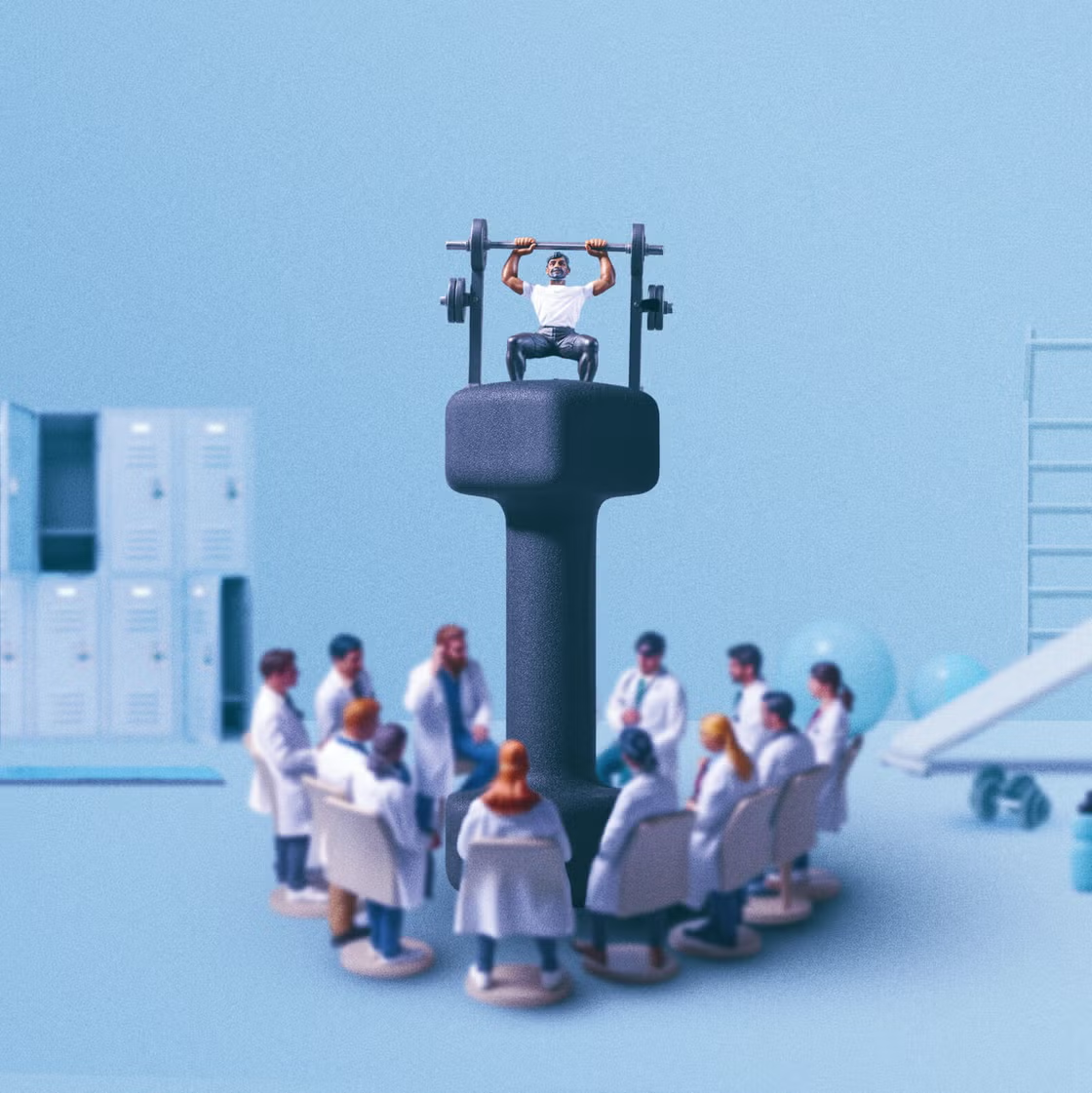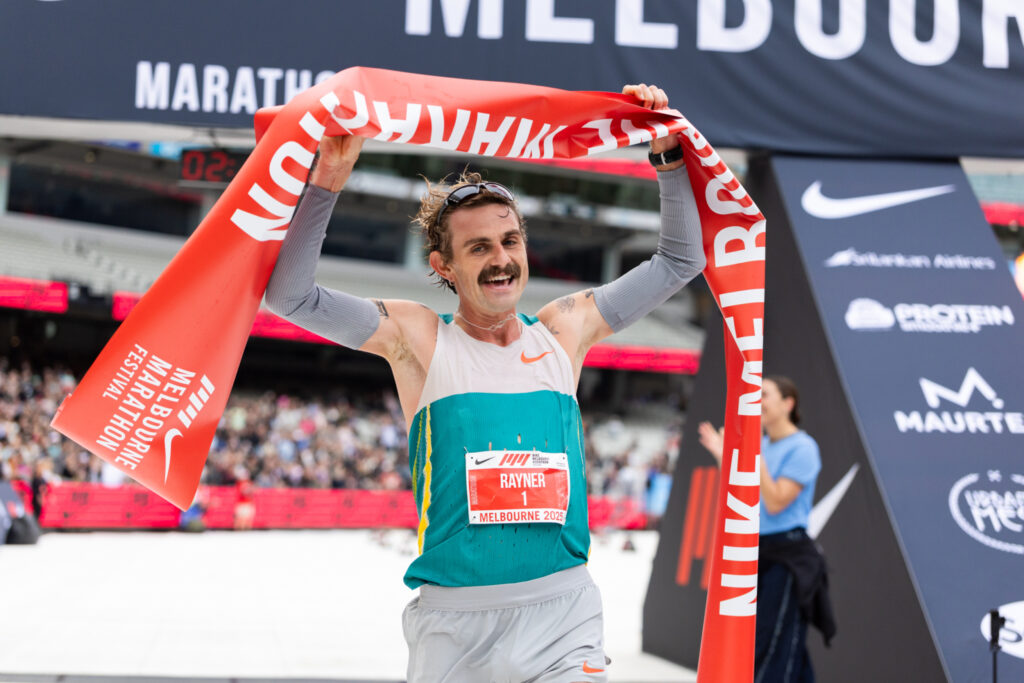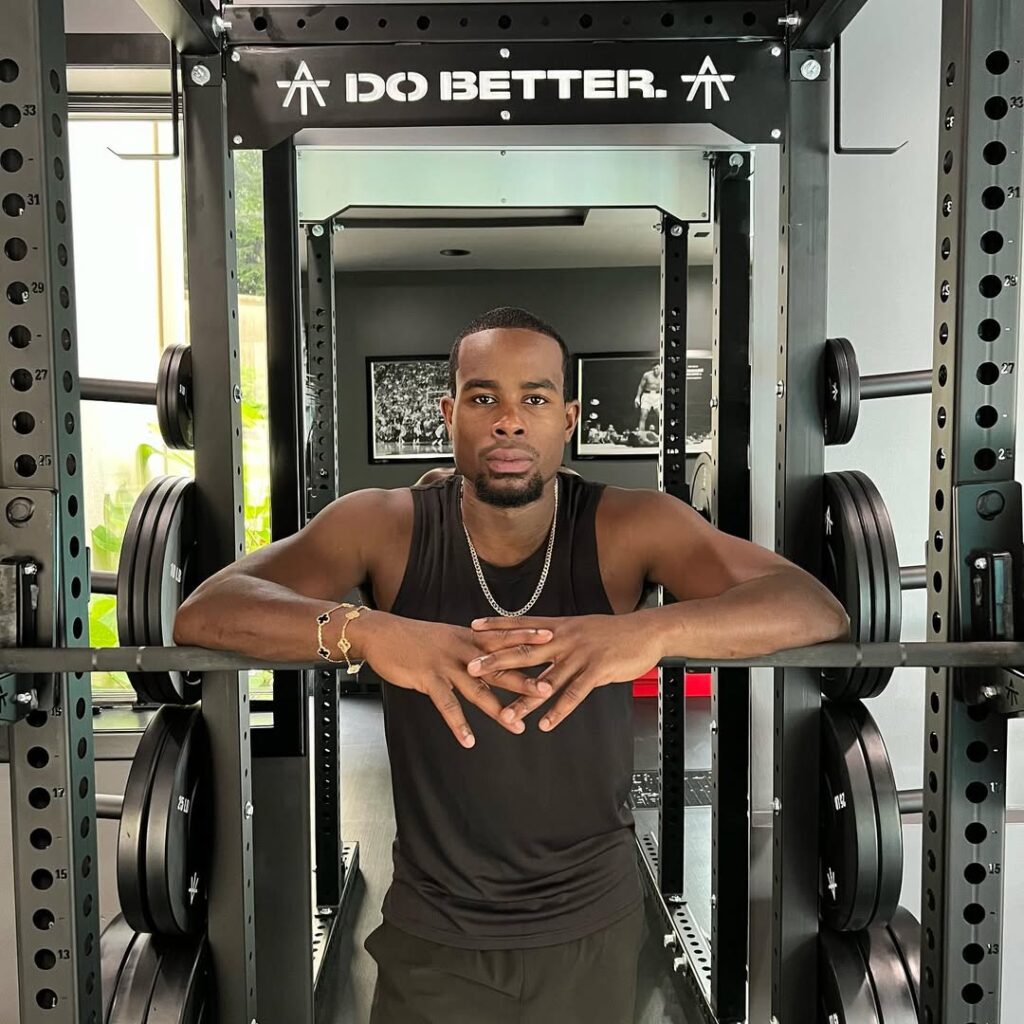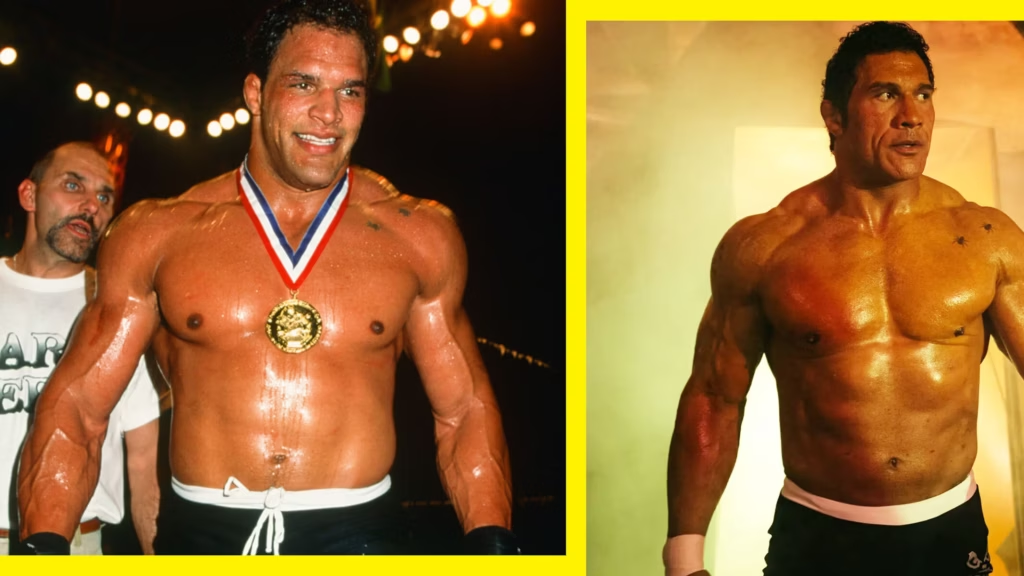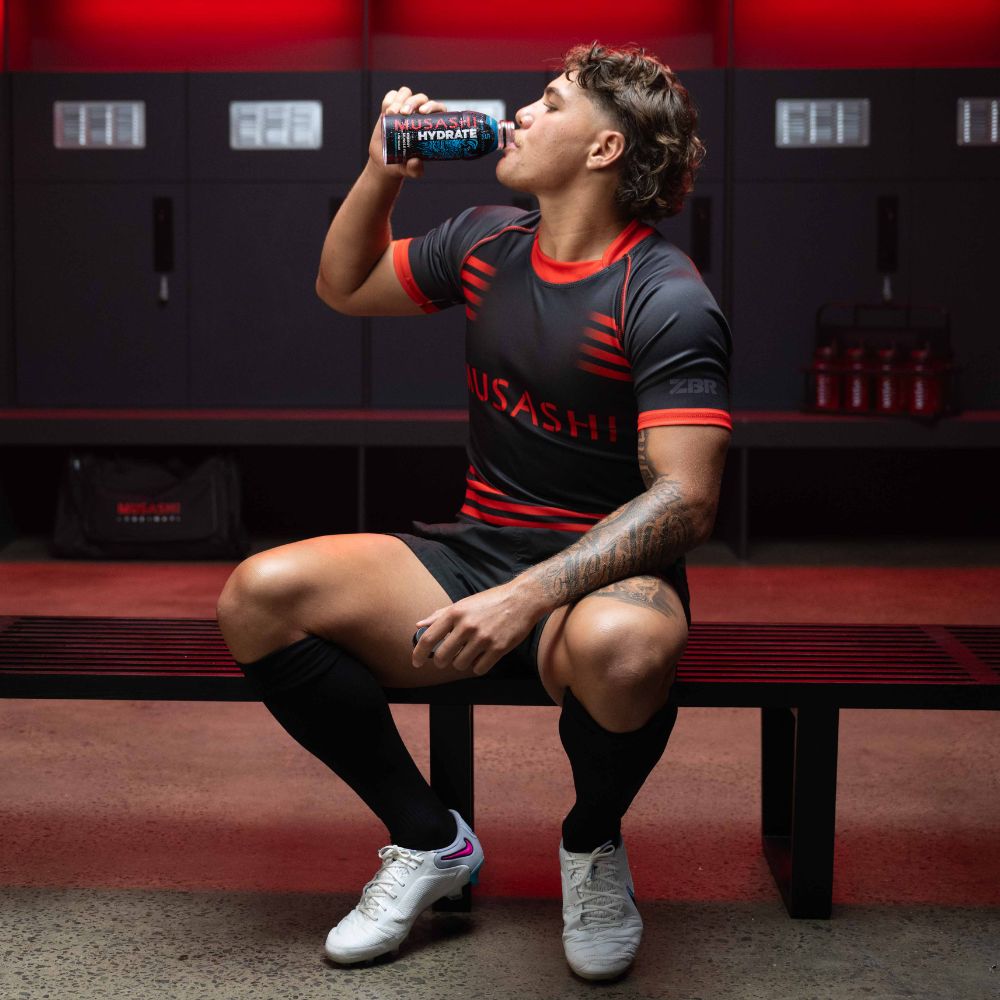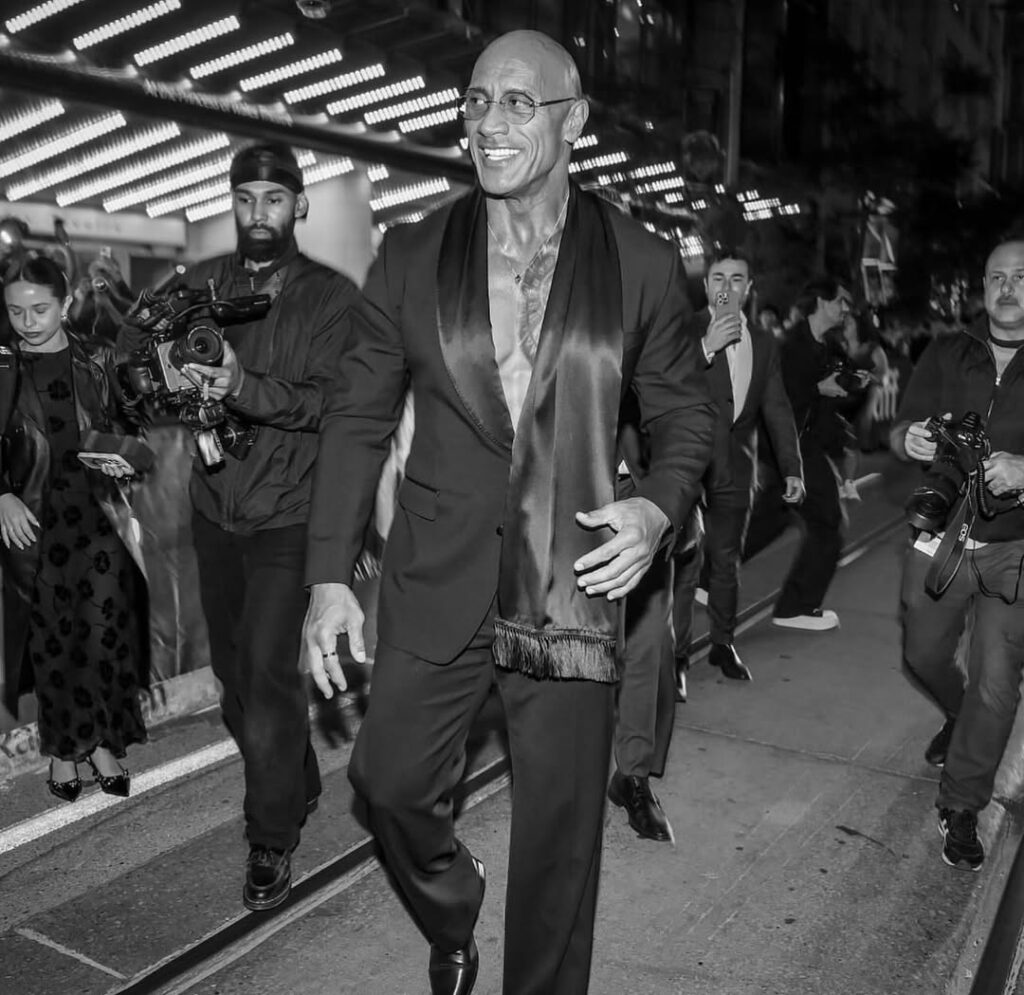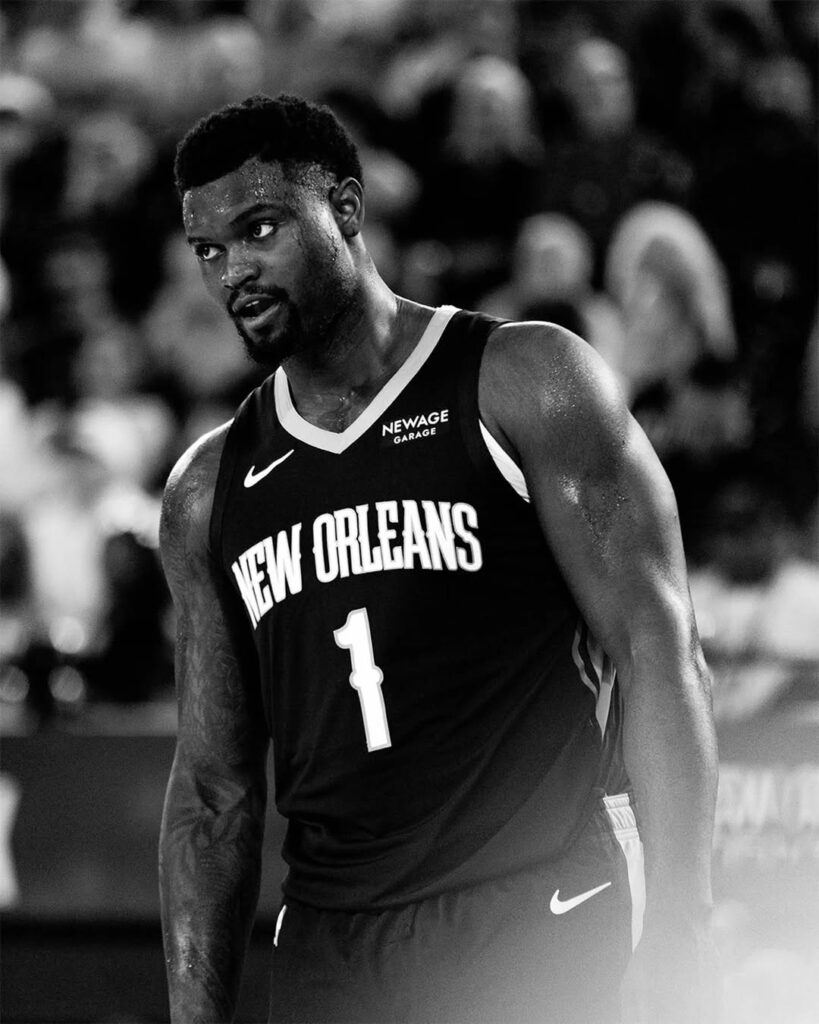LAST JULY, JOHN Foster, a 62-year-old management consultant, walked into Love.Life, a 45,000-square-foot gym housed in a former Best Buy in El Segundo, California. He arrived during the grand opening to find out about the new club’s shiny fleet of membership options, many of which beefed up the traditional gym-going experience. Only, where most luxury gyms’ additional amenities might include saunas or cold plunges, Love.Life was offering health care.
As a marathon runner and adventure racer, Foster has always been big into taking care of his mind and body. But in his early 40s, he found out he had granulomas in his lungs (clusters of white blood cells that form when your immune system isn’t able to destroy something it sees as dangerous) that caused him to have coughing fits every time he went on a run. He stopped running and focused on raising his four kids.
“I had to go through this major downshift of If I’m not a performance athlete, who am I?” Foster recalls. He quietly lost 15 pounds (7 kg) of muscle mass. “For decades, I was depressed that I’m not going to be doing an Ironman when I’m 60.”
Then, right before he did turn 60, he started experiencing unexplained shoulder pain. After seeing several doctors, an X-ray revealed that the discs in his cervical spine (a.k.a. his neck) had started to deteriorate, and he ended up having disc replacement surgery. His father had been a family doctor, so growing up he never had to worry about finding a decent physician. Now, though, figuring out how to manage his pain felt like a nightmare. His primary care physician wasn’t helpful, and he couldn’t stand going all over the place for answers—one place for an MRI, then another for a pain doctor, then another for an orthopedic, then another for a physical therapist.
“That was my first realisation that medical practice is broken,” he says. “I’m privileged – I have benefits, I have free time, I have a car. I can get around and figure this out. But it was ridiculous to me how bad that was.”
Given Foster’s decades-long health struggles, it seemed serendipitous when he found out that Love.Life, the new wellness club dreamed up by Whole Foods cofounder and former CEO John Mackey, was about to open a mile away from his house. Foster was already a big fan of Mackey for his business acumen, and his health club promised to provide medical care and fitness in one place. Foster figured he’d give it a shot.
After a 30-minute tour of the gym by a sales rep named Levi, Foster was sold on the Optimize membership tier. In addition to granting him access to a gym with high-tech cable machines and bikes, unlimited fitness classes, and unlimited use of the sauna and cold plunge, it includes, on an annual basis—deep breath—five physician visits, 10 acute-care appointments (otherwise known as short-term medical care), three expert practitioner appointments (with either a personal trainer, dietitian, behavioral therapist, physical therapist, acupuncturist, Reiki practitioner, or Chinese herbalist), two advanced blood work panels (one that measures over 120 biomarkers and one follow-up that measures 105, compared to the 20 or so you get at your annual physical), two body composition scans, one bone density scan, two VO2 max tests, one musculoskeletal assessment, 10 days of continuous glucose monitor use, one cardiac risk assessment, two longevity assessments, four monthly recovery services (cryotherapy, lymphatic compressions, hyperbaric oxygen therapy, red-light therapy, pulsed electromagnetic field therapy), and…pickleball.
He decided to pay for the membership up front. “I said, ‘I don’t care if this isn’t working yet—I want to be a part of this. Use me as a resource because I want to use you as my partner to be healthy.… I love being a guinea pig.’ ” The rep handed him an iPad to put in his information, and Love.Life charged his credit card $9,000—a deal compared to Love.Life’s highest tier, Love.Life Unlimited, which reportedly costs $50,000 per year. (As the name suggests, it offers unlimited personal training, physical therapy, and “unparalleled precision care from a physician-led team of 20-plus multidisciplinary experts.”)
“I said, ‘I don’t care if this isn’t working yet—I want to be a part of this. Use me as a resource because I want to use you as my partner to be healthy…I love being a guinea pig.’”
Love.Life was created largely for the reason Foster expressed: People are fed up with the traditional health care system, and those who can afford it are looking for novel, comprehensive, holistic approaches to their health. And they can get it all right inside their gym. Mackey is not the only one to recognize the business opportunity. Three months prior to the opening of Love.Life, Equinox launched its own premier membership in two locations called EQX Optimize, available to anyone who has $40K to drop on a program “designed to unlock the peaks of human potential.” Several months before that, Life Time debuted the MIORA Performance + Longevity program at its Minneapolis location (the company is hoping to add the program to five other markets this year), which gives members “a multidimensional comprehensive solution that addresses all aspects of wellness.”
All of these programs provide some version of preventive care. None of them accept insurance, though some services may be covered by out-of-network benefits or are FSA/HSA-eligible. No matter. These gyms believe that a segment of the population is willing to invest in their health and prime their bodies now rather than wait until they get sick and spend gobs of money trying to get well. And they’re probably right: Thanks to wearable trackers and sensors that give us more access than ever to our body’s data, we’re living in an era of peak optimization as we attempt to live healthier and longer lives. All three gyms declined to share membership numbers, though Equinox appears to have a wait list, and Life Time told me it was “hitting (exceeding) expectations.”
The costs of these programs may be staggering for those of us who wince at our $1,500-plus annual deductible, but when I spoke to S. Jay Olshansky, PhD, a professor of epidemiology and biostatistics at the University of Illinois Chicago School of Public Health, he said that this is often the price of progress, as ruthlessly capitalist as that may be.
“If [this type of program] works, which I think it will, then eventually you’re going to see a movement of the entire industry in the direction of primary prevention, which we should have done long ago, frankly,” he says. “Will inequities still exist? Will some people not have access to these concierge practices? Of course. The fact that it’s inequitable doesn’t mean it shouldn’t happen. It just means that we need to be cognizant of the inequity and do what we can to ensure that it eventually moves down to as many people as possible.”
So is the future of health care in the gym? I spoke to Foster, plus two other guys trying out these programs, at Life Time and Equinox, to find out what this class of memberships is really like, what we can learn from these early adopters’ results, and what it means for all of us when our local gyms are (gulp) potentially providing better care than our doctors’ offices.

JOHN BERRIGAN, A retired chemical engineer, lives just seven-tenths of a mile from the Life Time Fitness in downtown Minneapolis. Once he enters the gym, he walks past the fitness studios and pickleball courts and exercise areas before he heads down a flight of stairs to the check-in desk for the club’s MIORA Performance + Longevity program.
After he passes that desk—where he says the attendants have known his name since he joined the program last March—Berrigan heads into a space filled with therapeutic recovery devices, like compression therapy suits, vibration plates, and hydromassage beds. Continuing down the corridor and into the spa space with rooms that include cryotherapy, infrared saunas, and hyperbaric oxygen chambers, the colors change to deep brown and bamboo. It smells woodsy, like fern or tea tree oil.

Berrigan at the Life Time in downtown Minneapolis this past May.
It’s down here that Berrigan meets four times per year with MIORA’s medical director, Gregory Pippert, MD. They go over Berrigan’s quarterly blood draws and create a treatment plan that, in just a year, has helped the 64-year-old drop 26 pounds, raise his testosterone nearly 200 per cent, and get the 6′5″ cyclist back to biking 60 miles at a time. He hasn’t even had a cold since joining the program. “I’m just doing better,” he says cheerily.
It’s a far cry from where he was about five years ago. In August 2020, Berrigan was climbing across some boulders with his partner in the Upper Peninsula of Michigan when he slipped and broke his right hand and his right foot. Twelve months later, he was on a bike ride back home in Minnesota when he slipped on some slimy algae and broke his right hip. Eight months after that, back on his bike, he fell yet again, this time breaking his left hip and pubic bone.
On the advice of the emergency room orthopedist, Berrigan was put on bed rest to keep him from expanding his hip fracture. Over the two-year period, starting with his first injury, he gained 35 pounds, became prediabetic, and found out he has osteoporosis, which was why things kept breaking. “It was like, Oh my god, it’s too early for this,” Berrigan recalls. On top of that, he and his doctors had a difference of opinion on what a “successful” recovery would look like. For them: getting out of bed, dressing, and merely being able to climb a flight of stairs in his house. For him: getting back to his marathon bike rides.
“I just said, ‘This is not right. It’s not good enough. This is not how I want to spend the rest of my life,’ ” says Berrigan, whose grandparents all died of self-inflicted health behaviors, like smoking, drinking, or eating too much. “I channeled that anger and dissatisfaction into looking for an opportunity to raise my game.” It turned out that Life Time, the gym he was already going to, had begun offering a new longevity membership program in November 2023. “The MIORA program offered me an alternative to just being a lump of flesh waiting to die,” he says bluntly.
For an additional $149, on top of the $230 per month he had already been paying to belong to the club, Berrigan signed up for MIORA’s—wait for it—Optimization tier. After a comprehensive metabolic assessment, which cost a one-time fee of $599 and looked at everything from adrenal, thyroid, and sex hormones to gut health and cardiovascular health, Berrigan had an hour-long meeting with Dr. Pippert to put together a care plan that combined physical exercise, diet, and supplementation. (Berrigan also has access to peptides and GLP-1s through Life Time for an additional cost, but he has chosen to take a “less aggressive” level of intervention. “When I meet my initial goal, I might get more aggressive,” he says.) The point, says Dr. Pippert, is to create optimal health with a holistic, 360-degree approach—something he couldn’t do at his own medical practice.
“More often, what happened is I would make a recommendation [for a dietitian and trainer], but people didn’t follow through,” he explains. “I couldn’t follow up and say, ‘Well, you didn’t see Charlotte [the nutritionist] like you said you would,’ because it wasn’t within my system.”
Cliff Edberg, the senior director of MIORA Performance + Longevity at Life Time, had a similar mindset at the gym. When he was Life Time’s lead trainer, there was always a subset of people he couldn’t get consistent results with because they had hormone imbalances or gut issues that he wasn’t able to treat. So he’d send them out into an ecosystem and hope for the best. He left the fitness division to oversee MIORA, where his clients now have access to personal training, plus a good diet plan, stress reduction tools, and accountability.
This is exactly what Berrigan was looking for. After he meets with Dr. Pippert for an hour, he’ll meet with a registered dietitian for another hour, and then those two practitioners will meet twice per week to make sure he has a solid plan. “I like how the internal medicine flows to the nutrition, which then flows to the exercise,” he says. Though Berrigan did say he wouldn’t recommend this program to a hypochondriac: “You’re going to find out a lot of stuff.”
Of the three men I spoke to, Berrigan has the sparest membership cost. He says his income used to be over $250K annually, but it dropped below $100K after he retired in 2024. He pays around $5,000 per year and justifies it mostly for the blood work, “sliced down to the cell,” he says. He still maintains a primary care physician for his annual physical because that’s paid for by Blue Cross Blue Shield, but he’s not impressed with the care he gets there. “He takes a few tests, does my blood pressure, makes sure my heart is beating, takes his little hammer and taps my knee, and if the knee jerks, I’m good and ready for another year,” he quips.

After Berrigan got his first round of blood work done at Life Time, Dr. Pippert put him on a daily dose of 10,000 IUs of vitamin D (the recommended daily dose for an adult male is 600 IUs), as well as a gram of calcium (this is a more conventional dose for an adult male), and 160 milligrams of magnesium. Previously, Berrigan says, he was taking the GNC Mega Men multivitamin for his general health, which he was told wasn’t nearly enough for his weakened bones. By September 2024, six months into the program, his bone density had improved by 10 percent.
The blood work also showed that he was prediabetic, his testosterone was low, and his estrogen was high. So he began taking metformin for the prediabetes, anastrozole and enclomiphene to suppress the estrogen, and DHEA to “yell” at his pituitary gland to make more testosterone. He buys the metformin and anastrozole from CVS through his health insurance, the DHEA from GNC, and the enclomiphene from a licensed pharmacy through MIORA because it’s “more unusual,” he says. Though Berrigan considered testosterone replacement therapy, he felt that taking a more paced approach—using supplements and medication to help his system produce more of what it could on its own—was a better option for him.
Berrigan also worked with his MIORA dietitian, Charlotte. She got him to drink Electrolit before and during his bike rides to ease his cramping mid-ride. Instead of having a big bowl of sugary granola for breakfast, he now makes two eggs and toast. He swaps his Double Whopper Cheese at Burger King for a fish sandwich at Arby’s. I ask Berrigan if he was aware of these beneficial nutritional tweaks before he started working with Charlotte.
“I knew all this stuff,” he says resignedly. “It’s just that when you get into the position where you are helpless and things are really shitty, you ask for the cinnamon rolls and the ice cream. Talking with Charlotte and having that accountability helped me change my mindset. She got me to the point where I was looking for other things to eat and giving myself kudos for doing that. It was something of a behavior shift and an image shift, because I’m not the poor bedridden guy with the broken bones anymore.”
When Berrigan had his third blood draw, in November 2024, his cholesterol had dropped from 186 to 158, his LDL went from 122 to 90, his glucose fell from 109 to 96, and his testosterone jumped from 109 to 308. “All the blood work is almost perfect, so now I don’t have to really worry about any of that,” says Berrigan, noting that only his estrogen remains a little high.
This past February, with his blood work and nutrition in a good spot, Berrigan had an assessment with his physical trainer, Zack. In March, he began a workout program that has him hitting the gym three days a week: On Mondays and Wednesdays he does different full-body sets, and on Fridays he does core. Zack uploads the program into the Life Time Training app, where Berrigan can see it directly. The app also tracks his progress (amount of weight, reps, and sets) and provides a video of Zack performing the exercises, so Berrigan can do all of the workouts on his own. He hopes he can lose 20 more pounds to get back to 220, the weight he was a decade ago.
“I feel so much better, my sleep is so much better, my regularity is like clockwork,” Berrigan says. “However long [life] lasts, none of us know. But we have an opportunity to make our quality of life better now.”

GAURAV SINGH JOINED the Century City Equinox in Los Angeles six years ago and has clocked over 1,800 check-ins since. In the past three years, the 5′11″, 48-year-old real estate developer has been working closely with his Equinox trainer, Nathan, to push his training further. When this location began offering Equinox’s EQX Optimize program last October, he signed up, even though the price tag was roughly $40,000 a year.
Somewhat surprisingly, given the price, Equinox’s program—which is also available at the Highland Park location in Dallas and will soon expand to New York, Miami, and San Francisco—does not provide face-to-face access to physicians. It offers two annual blood tests, in partnership with personalized health platform Function Health, that provides access to 160-plus biomarker tests and normally retails for $499. (Function recently introduced a 22-minute full-body MRI powered by FDA-cleared AI, which will eventually be integrated into the EQX Optimize program as well.) That blood work is then interpreted by a doctor from Function, who passes along some notes about things the patient could be doing better or should keep an eye on. After Singh had his first blood test, he went over those notes with his Equinox nutritionist, Jillian, and a primary care physician he maintains outside of Equinox.

Singh in front of the Century City Equinox in Los Angeles earlier this year.
Singh’s current goal with Optimize, however, has less to do with his blood work and more to do with his endless quest to build muscle. He began playing tennis when he was a 5-year-old in New Delhi, India. By 8 years old, he was beating kids four years older than him. Then he ran into a problem: The other kids started growing—and he didn’t. “I was small and puny compared to these bigger boys,” he says. When he moved to the States at age 23 to attend grad school at UCLA, the self-proclaimed “beanstalk” began going to the gym to lift weights. He says he’s put on 50 pounds—going from 150 to 200—since then and has gone to some extreme lengths to do so, including a supplement routine that topped out at 29 pills a day.
Today, the goal is to be “50 and ripped.” Yeah, he wants to crush the players who are 30-plus years younger than him on the court and look good for his wife. (“My wife is more than a few years younger than me, so I want her to keep thinking of me as attractive,” he says. “It’s really good for my sex life.”) But he also knows that muscle is the key to longevity. He would like to be there for his son, who won’t hit his 18th birthday until Singh is 65.
After years of training, Singh says that things “clicked” when he joined the EQX Optimize program and he became more aware of eating and sleeping habits that were holding him back from meeting his goals. His membership came with an Oura ring and a sleep coach named Samantha. Both have helped him better understand when he should push himself and when he should dial back and let his body recover.
With the help of his nutritionist, he has better balanced his diet, eating less steak and more plant-based protein, fruits, and veggies. He has also slimmed down his supplement stack from 29 to a much more manageable 8, including creatine, fish oil, beta-alanine, potassium, and magnesium. He works out with Nathan every Monday through Friday. On Saturdays, he plays tennis or walks on the treadmill for 90 minutes. On Sundays, he gets a massage or does some other form of recovery to prime himself to do it all over again.
And he’s seeing results. In the past six months, according to his most recent body composition scan (which he did not receive at Equinox), his skeletal muscle mass percentage jumped from 87.1 to 93.3 and his body fat percentage dropped from 17.2 to 14.8. His goal is to get to around 220 pounds, with a body fat closer to 12 percent. He recently bench-pressed 225, a major personal win.
“It doesn’t put a dent in my pocket if I’m getting the right people and the right information at the right time…I will work out with Nathan every day of the week until I’m 100 years old.”
Even though his program may not offer the medical care that Berrigan and Foster have, Singh says the value in his plan is the coordinated care he receives from Nathan, Samantha, and Jillian, all of whom meet at least once a month to get on the same page. He points to a recent bout of norovirus as an example of why that’s helpful. Jillian was able to give him suggestions on what to eat to speed up his recovery while monitoring his weight and caloric intake, and Samantha monitored his sleep. Both then communicated that information to Nathan, who used it to tailor the training sessions to Singh’s energy levels. He didn’t miss a workout even while he was sick. Singh gets to be less hands-on with his fitness, yet he receives more personalized care.
That’s something he’s willing to pay for, especially because Singh, who says he makes more than $500K in annual income, was already paying $3,600 a month for his five weekly training sessions with Nathan. Now his Equinox bill is $4,250 per month. Singh says he spends an additional $50,000 a year outside of Equinox for nutrition, supplements, private tennis lessons, chiropractic work, and access to a hyperbaric chamber. He also plans to spend another $50,000 on a personal chef to help him achieve his 4,000-calorie daily goal, bringing his annual health spend to a grand total of $150,000, give or take.
“It doesn’t put a dent in my pocket if I’m getting the right people and the right information at the right time,” he says. The thing about optimizing, too, is there’s always work to be done. “I will work out with Nathan every day of the week until I’m 100 years old.”

IN AUGUST 2024, about a month after he first toured Love.Life and signed up for his Optimize membership, Foster returned to the wellness club for an intake appointment with a Love.Life physician. For an hour, Foster walked the doctor through his medical history, including the issues with his lungs, neck, and shoulder.
“That was the best interview I’ve ever had with a doctor,” Foster says. “She was curious. She was patient. That was what I was most impressed with—like, okay, finally somebody is listening to me and is going to help me deal with these things that my other doctors have never been interested in. Normally you’re there, you talk to the doctor for five minutes, and they move you out.”

Foster joined the Optimize program at Love.Life in 2024.
Together, they came up with three goals: optimize longevity and fitness, boost right shoulder and scapula function, and improve VO2 max. His care plan is uploaded into an app (which also connects to his Garmin and his continuous glucose monitor), where he can track all of his trends, from heart rate variability to sleep to step count to blood pressure to blood sugar. That same day, Foster walked across the hall to get a DEXA scan, measuring his bone strength and density as well as his body composition. This is what would become known as the “onboarding” phase of his membership.
Foster says the type of longevity he’s interested in is not the kind that has been popularized by biohackers who are measuring their nightly erections or injecting themselves with their son’s blood in an effort to live forever (lookin’ at you, Bryan Johnson). “I could care less about being 90,” says Foster. “I’m not interested in extending my life. I’m not thinking, I hope I can lift my grandkids with two arms—those things don’t resonate for me. I want to be stronger today, so I can experience the joy of that moment of feeling strong when I run down the street or try to climb something.”
To make that happen, Foster is willing to try the experimental treatments that Love.Life offers. Valter Longo, PhD, a professor of gerontology and biological sciences and the director of the Longevity Institute at University of Southern California, is concerned that these alternative treatments can create a conflict of interest between the gym and the member, especially if they come at an additional cost beyond the membership fee. Since these gyms offering medical care still have to worry about their bottom line, they might push services—like pulsed electromagnetic field therapy (PEMF) or cryotherapy—whose efficacy, especially over a long period of time, is far from certain. “Unfortunately, what you get from a gym—or any clinic that has not really been in the [longevity] domain for a long time—is enthusiasm about novelties, which could eventually end up being bad for you.”
Foster laughed when I raised Longo’s objection with him. “The conflict of interest is having a patriarchal doctor try to tell me he knows more about me than I do, and that’s backward,” he says. “These doctors are at my command with their expertise in the same way if you hired someone to build a room in your house—it’s your house and they’re going to work for you and you’re going to pay them. People do have unscrupulous contractors, and you could end up paying too much, but that’s true in any business. If you’re a smart consumer and you have trusted advisors, you’re going to make better decisions for yourself.”
When I push Foster on the point about efficacy, asking how he justifies paying for services that may not be helpful, he brings up an information session he went to at Love.Life. It discussed chronic pain, and how effectively treating it requires not just a biomechanical approach but one that considers emotions and psychology. Similarly, Foster believes that it’s not just the treatments that impact his health but the mentality he takes into them.
“That’s the whole point of well-being: If you’re not believing in yourself, your brain and your body are not working to help you,” he says. “That’s hard to prove. But if anybody’s going to prove it, I can prove it myself. I’m not just magically doing, like, Reiki. I’m using data to see if what I’m doing is working.”

A week after the orientation, he was back to try out the facility’s PEMF device, which delivered electromagnetic pulses to his neck and shoulder—something he’s been repeating almost weekly ever since. A few days after that, he did his first VO2 max assessment to see how efficient his body was at delivering oxygen to his muscles. Another few days later, he saw Love.Life’s physical therapist, Danél, to begin work on unfreezing his shoulder. The following week, his blood was taken for his comprehensive blood panel, through Quest Diagnostics, measuring 120 biomarkers. By mid-September, he was back with his doctor to go over his blood work.
The doctor told him to start taking supplements to raise his omega-3s, which were low. More important, she told him that he needed to start taking methylated B vitamins—B12, B6, and B2—to regulate his elevated homocysteine, a marker of inflammation that can build up in your body and is a risk factor for heart and autoimmune diseases. Because Foster had been previously diagnosed with granulomas in his lungs, his doctor suggested he get both a CT scan and a lung function test to go along with his previous VO2 max assessment. All of those suggested that Foster’s lungs were still compromised. Instead of going to a pulmonologist, he decided to try acupuncture.
“I chose with her support to not go further in the Western medicine specialization, for someone who is going to say, ‘Yeah, we can give you some drugs or something, but we don’t really know what’s going to help you, because you’ve been living with this for 20 years and you seem fine,’ ” says Foster. “I was like, ‘I am fine, but I want to be better, so how can I get better?’ So now I have [my doctor] as my quarterback. From September to November, I got more time with the doctor to talk to me about my health, my goals, and to explore the weirdness of my own system and come up with these interesting things and tracking it all with blood tests.”
Foster says it’s this level of accountability, time, and attention that’s reminded him of how doctors have failed to live up to the promise of primary care. “Most of the care you need isn’t medicine; most of it is lifestyle,” he tells me. Having all the people who are working on his body in one place provides him with a type of health care that he says is less transactional and more holistic. He also recognizes the value of community when his practitioners connect with him on a first-name basis. “This is what whole health care looks like.”

While he was monitoring his health, Foster continued to work on his fitness. Three months of weekly physical therapy sessions helped him get full mobility back in his shoulder. As of this spring, his new goal is to become stronger—and even try to reclaim his ability to go from a sitting position into a handstand, something he hasn’t done since he was 30. He’s working weekly with his trainer, Rachel, to build around 5 to 10 pounds of muscle mass (“I’m not trying to be bulky like Arnold Schwarzenegger,” he says) and has added weekly yoga classes too.
“Innovation means you have to try stuff and iterate,” Foster says. “If you don’t try it, you never get the data. I now have data from my blood tests that my supplements work. I started taking omega-3s in October, and my number went from 3 percent to 9 percent. That to me is proof [it’s working].” He continues, “I’m doing the same thing with PEMF and PT. Can I discern that PEMF helped my shoulder any more than the PT? No, because they were coexisting while I did it. But I’m in fully functioning shape with my shoulder now, and I used PEMF for part of that time.”
Foster says his yearly household income is above $500,000, but he does “cringe a little bit” at his $9,000 annual Love.Life bill. He thinks of it less as a payment for a service and more as an investment in innovation, and he hopes that these types of services become more prevalent and accessible in the future.
“Is this a better model long-term? Absolutely,” he says. “But this is why I call it prototyping. It’s not financially accessible yet. Until we restructure the health care system…Love.Life is pioneering one piece. It’s an integrated, easy-access, somewhat expensive, very data-driven thing. I’d say in five years you’re going to look at this and go, ‘Dang, they were right. They were so right.’ ”
Courtesy of John Berrigan (gym, red-light therapy, cryotherapy). Courtesy of Life Time MIORA Center (infrared). Courtesy of Equinox (Gaurav Singh). Courtesy of John Foster (portrait, VO2 max). Courtesy of Love.Life (gym, exam room, tanks).
This article originally appeared on Men’s Health UK.
Related:




